This project is a great example of how to restore the appearance of high-quality stone flooring — in this case, a Travertine tiled kitchen floor in Newbury. Tile Doctor has developed a specialist burnishing system that uses diamond floor pads to achieve outstanding results. We have found that liquid cleaning products alone are not as effective, and in fact, some household cleaners can cause damage if used incorrectly.
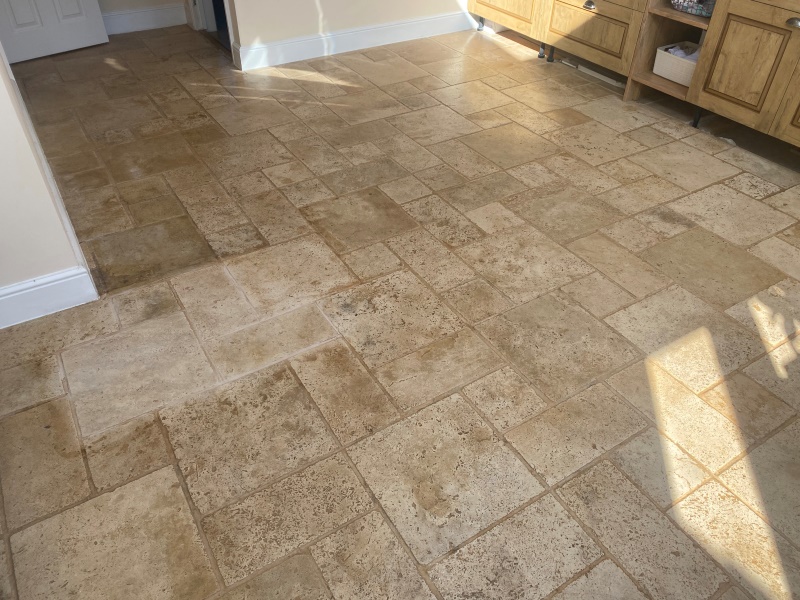
The client in Newbury was struggling to keep their pitted Travertine floor clean. The tiles had become exceptionally dull and dirty, with soil ingrained in the pores and pits of the stone. I was asked to restore the floor’s appearance, so I visited the property to survey the condition and carry out a test clean. This involved burnishing a small area of the stone and cleaning the grout to demonstrate the achievable results.
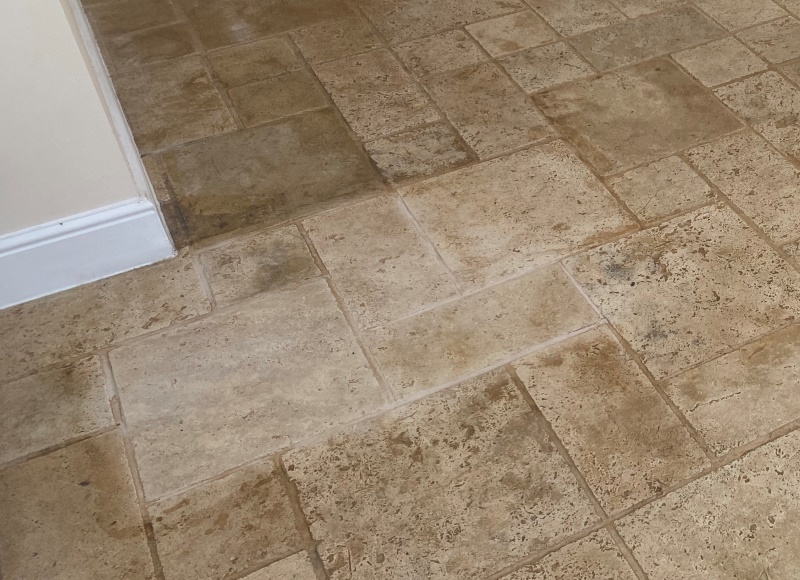
The Travertine tiles and grout responded very well to the test, clearly showing how much dirt had built up since the floor was last restored. Pleased with the improvement, the client approved my detailed quotation, and we scheduled a date for the full renovation.
Burnishing a Travertine Tiled Kitchen Floor
As mentioned, burnishing is the most effective method for restoring Travertine. It not only cleans the surface but also tightens the pores in the stone, producing a natural sheen even before sealing. The process involves using diamond-encrusted pads of varying grits in sequence with a rotary floor buffer. Coarser pads remove ingrained dirt and surface buildup, while finer pads gradually refine the stone to create a smooth, polished finish.
The burnishing process begins with a coarse 400-grit pad, applied with water for lubrication and worked over each tile several times. The slurry is then rinsed away and extracted with an industrial wet vacuum. This is followed by the 800- and 1500-grit pads, each applied in the same way, with rinsing and vacuuming after every stage.
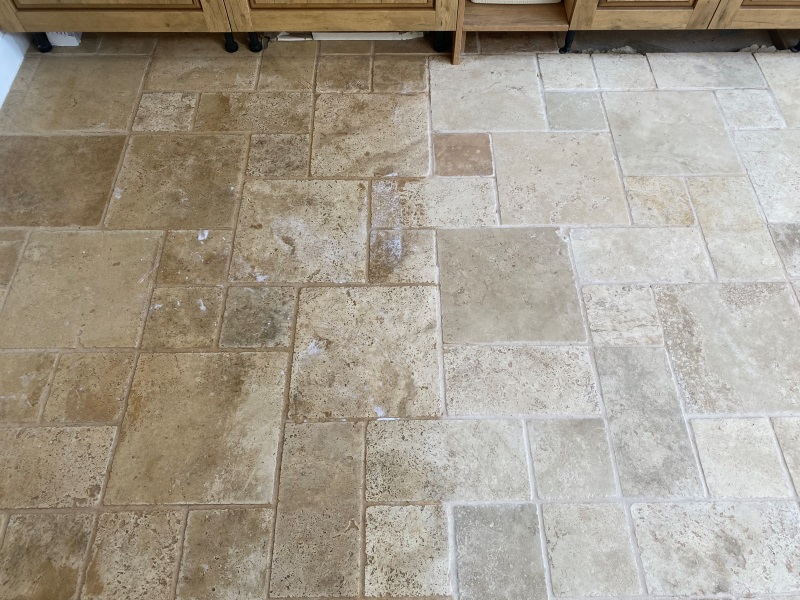
Once the burnishing was complete, I turned my attention to the grout. A strong dilution of Tile Doctor Pro-Clean was applied along the grout lines and scrubbed in with a stiff brush to remove embedded soil. The residue was again rinsed and extracted using the wet vacuum.
The final stage of polishing involved a very fine 3500-grit pad, applied dry with just a little water misted onto the surface. This step produces a deep, durable polish on the Travertine, enhancing its natural beauty.
Sealing a Travertine Tiled Kitchen Floor
After allowing the floor to dry overnight, I returned the next day to complete the sealing. Moisture readings confirmed that the stone was suitably dry and ready for treatment. I applied Tile Doctor Colour Grow, a premium impregnating sealer that also enhances the warm brown tones of the Travertine. This type of sealer penetrates the pores of the stone, providing maximum protection by preventing dirt from becoming trapped within. Instead, contaminants remain on the surface, where they can be easily wiped away.
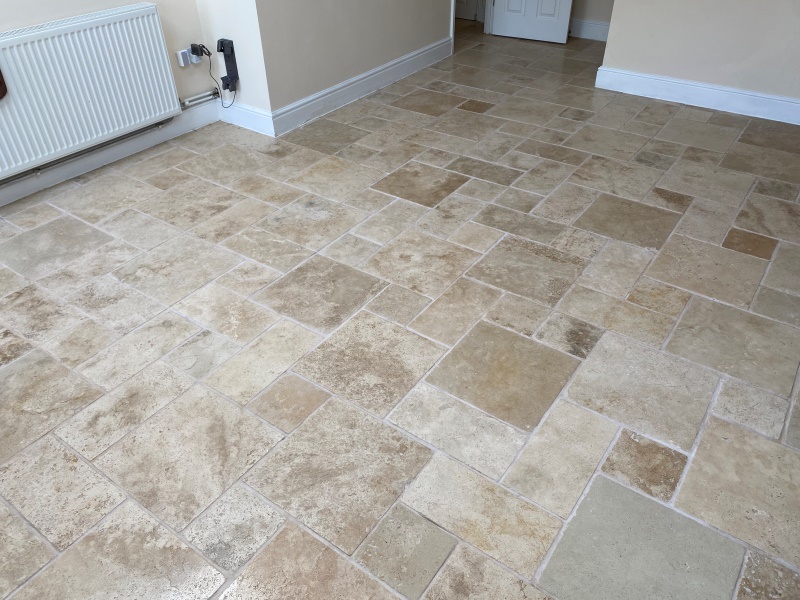
Once complete, the Travertine floor looked dramatically cleaner, brighter, and more refined—much to the client’s delight. Before leaving, I provided aftercare advice and recommended Tile Doctor Stone Soap as a maintenance cleaner to help preserve the finish and keep the floor looking its best.
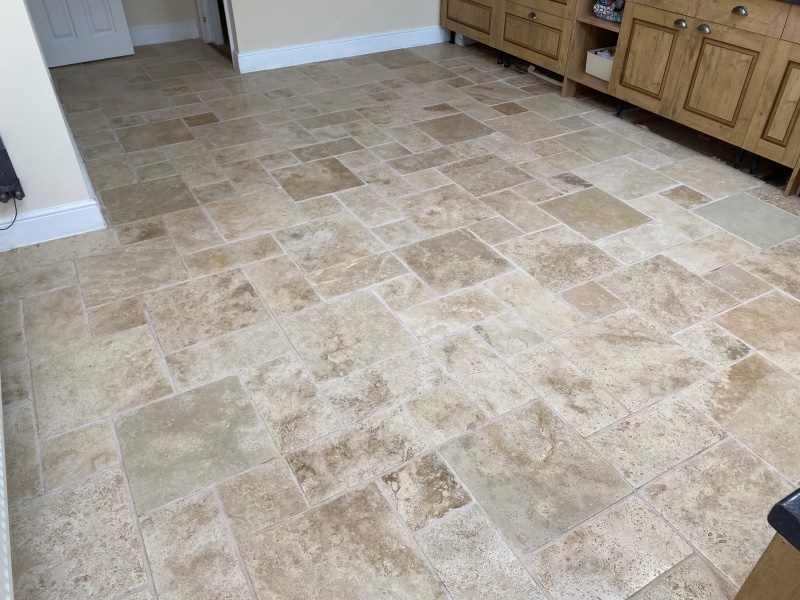
Source: Professional Travertine Floor Tile Cleaning Service near Newbury Berkshire
Serving Berkshire and the surrounding area, Dennis Buckland is your local Tile, Stone and Grout maintenance expert. Additionally he is an agent of Tile Doctor, the largest professional Tile, Stone and Grout restorative cleaning network in the UK. Tile Doctor has developed products and techniques to handle a multitude of issues surrounding tile, stone and grout, interior, exterior, domestic or commercial.